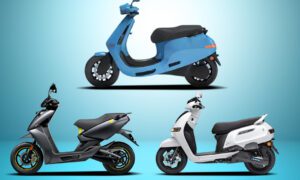The design industry has been a key player in the disruption of engineering and manufacturing processes for since long. From manual processes to automated manufacturing processes, we have come a long path. But what drives these drastic shifts?
Enter the continual reiteration that keeps design processes lean, agile, and effective.
Now the question arises what’s next?
Generative design is the gen-next breakthrough in the design of manufacturing industries. Bringing in exponential scalability to innovative designs, generative design technology brings a host of benefits. If you are wondering if this technology can benefit your manufacturing process, you need to read this post.
Here, we take a closer look at what you can accomplish together with generative design in your engineering systems. Let’s dive in.
Generative Design 101: Everything You Need to Know
Generative design is the redefining technology of the manufacturing industry. It is the answer to every challenge that a manufacturing designer faces in engineering designs. Think of it like this.
In a traditional engineering design model, designs are created in a linear fashion. One designer with one software produces design versions. Having a human inside the design process makes the number of design versions limited. Moreover, it is heavily time-consuming.
A design landscape that integrates generative design technology has access to every possible version of a design version. One designer with artificial intelligence and cloud computing produces thousands of design versions, all in a fraction of time. The only constraint in this landscape is the parameters that a designer sets for the design output.
So, what is exactly generative design technology? Let’s find out.
What is generative design?
Leveraging the powerful technologies of cloud computing and artificial intelligence(AI), the generative design mimics the natural design process.
You, as a designer, have access to innumerable design versions at a fraction of the time that the traditional processes take. This means the complete design process runs at optimal levels with this technology.
All you need to do is input design parameters like materials, size, and weight, manufacturing methods, cost criteria into generative design software. This tool runs every possible design outcome for you. As a result, you have a host of design options to come up with the best version.
Now when you are aware of the concept of generative design, let’s take a closer look at why you should incorporate it at all?
Why is generative design important for the future of engineering designs?
Engineering designs are complex processes. Innovating one product that could disrupt the industry takes a lot of hard work. A generative design software ensures it does not have to be.
Fishing out the key limitations that lie in the path of building breakthrough innovative products, this technology harnesses the power of artificial intelligence (AI) and cloud computing to gain product viability in a fraction of seconds. With this tool, your product is not limited to the knowledge and research of your product development team. Neither is it time-consuming.
With generative design, you can develop complex shapes and internal lattices at optimized levels, some of which would be impossible to be delivered in a traditional manufacturing design landscape. Instead, this new technology uses additive manufacturing methods to simplify the development of these complex shapes.
So now, when you know how generative design can revolutionize your industry, let’s take a look at the key areas where you can witness improvement immediately.
What are the key benefits of generative design?
Generative designs bring a host of benefits. While some may be visible from the surface, others need to be deduced. Let’s look at the top 6 merits that it brings to your business.
a) Reduction in product weight: Simulating design parts with generative design optimizes the weight of the specific part while keeping the requirements of other parts intact.
b) Maximum design options: The core utility of this technology is the host of design options it brings in a fraction of time compared to traditional manufacturing designs.
c) Leaner product development cycle: The product development cycle in a manufacturing design process that utilizes generative design technology is fast, agile, and smooth. Taking out human involvement from the design process and utilizing artificial intelligence, this tool comes up with numerous viable design versions for soft launch testing. What follows is a shorter final launch of the product to the market.
d) Improved designs: Using machine learning technology, a generative design tool only gets better with time. Learning from past data, this tool improves every design version in every iteration while identifying and optimizing weak design areas.
e) Cost optimization: Integrating multiple parts into one, this technology successfully reduces product manufacturing and maintenance costs.
f) Simplify complex designs: Bypassing the limitations of traditional design programs like CAD, generative designs can develop complex shapes and structures that were not previously impossible to achieve. However, you would need a 3D printer to work side by side with this tool.
How does a generative design software process work?
The typical generative design process incorporates 4 key phases. The overall success of the design process depends upon each of these phases.
a) Initial design input from the design team: Like a traditional design model, you need to first finalize the constraints of your design. From materials to spatial measurements to budget constraints, everything needs to be detailed here. Remember, the finer the input you give here, the finer the final output will be.
This makes your job as a designer critical here. Go hyper-specific while detailing constraints, methodologies, and other attributes. Then this data becomes the foundation for the artificial intelligence (AI) program to work for you.
b) Let the AI work for your team: Once you have entered the foundational parameters, let the generative design system process the data. Here, it uses the power of artificial intelligence and cloud computing to come out with results that are the output of complex algorithms.
The best part is there are multiple versions of designs to choose from. In this process, the system will perform performance analysis simultaneously. This determines the viability of each of the designs, whether they satisfy the set parameters or not.
c) Your design team infiltrates here: After the successful generation of every viable design version, your design team reviews the designs and updates the constraints if not satisfied with the design outcomes. You can keep on reiterating this process until the finalized outcome. Here, along with AI, market demands and viability plays a key role in finalizing the end product design.
d) Create your prototype: After the successful creation of the design, your design team creates the prototype. The prototype is validated via a soft launch to kickstart the final launch to put it on full-scale production. If the soft launch fails, the designer goes back to the reiteration phase to make tweaks to desirable outcomes. Although this phase of the process is complex and time-consuming, most of the time is saved by your design tool.
Top generative design software
You can find multiple software to use in the market. Here are our top picks.
a) nTopology: nTopology’s advanced engineering design software improves both product innovation and the time of successful launch. Using the power of artificial intelligence, it enables you to not only design parts but processes. This software uses state-of-the-art generative technology to give you complete control over the optimization process.
b) Autodesk Dreamcatcher: This tool is the next generation of CAD and enables designers to realize their best design solutions by defining their design problems and constraints. The best part, if you are already using CAD, it would just feel like an update. This means the least learning curve with maximum output.
c) SolidWorks: Dassault Systemes 3D modeling software is packed with power. You can create, simulate, iterate and publish final designs all from one dashboard. The best part of the software is the precision it gives to your design works.
d) Rhinoceros 3D: What was once impossible, with this tool is now possible. Rhinoceros boast a fast, stable, and super intuitive UI that takes manufacturing designs to the next level.
How do modern companies utilize generative design in 2021?
Although generative design still is constricted within the early adopters of the technology, it has achieved some noteworthy results for the following companies.
a) Airbus: While others are still thinking, Airbus has already successfully implemented. This prominent airplane manufacturing company utilized generative design technology to manufacture lightweight, durable plane components and optimized cabin partition design. Recently, Airbus has used generative design to create a new style of cabin partition. What followed is improved fuel efficiency and plane capacity.
b) MX3D: MX3D has audacious goals to achieve through generative design. This robotics company is turning its interest in industrial architecture and is planning to build a canal bridge with the technology in Amsterdam.
c) Black & Decker: This tool manufacturing company has successfully utilized generative design to come up with smart tool parts.
Parting Advice
Generative design is a powerful yet futuristic technology. With time the power of this technology will only grow. But there is still a long way for this technology to become mainstream with all manufacturing industries.
You already have a basic understanding of the technology and how it can benefit your business. This means if you leverage its power today for your business, you already have a competitive advantage over other players in your industry. It can bring a deeper understanding of the core processes your business operates in and leverage sales opportunities.
So, when are you deciding to incorporate generative design in your process?
About the Author:
Atreyee Chowdhury works full-time as a Learning Experience Designer and is passionate about writing. She has helped many small and medium-scale businesses achieve their content marketing goals with her thoughtfully crafted content that is both informative and engaging. She lives in Bangalore, India with her husband. In her free time, she loves to read, experiment with different cuisines, travel, and explore the latest content marketing and L&D trends. You can reach her on Linkedin or write to her at atreyee.c@gmail.com to discuss your content marketing plans and requirements.



















































